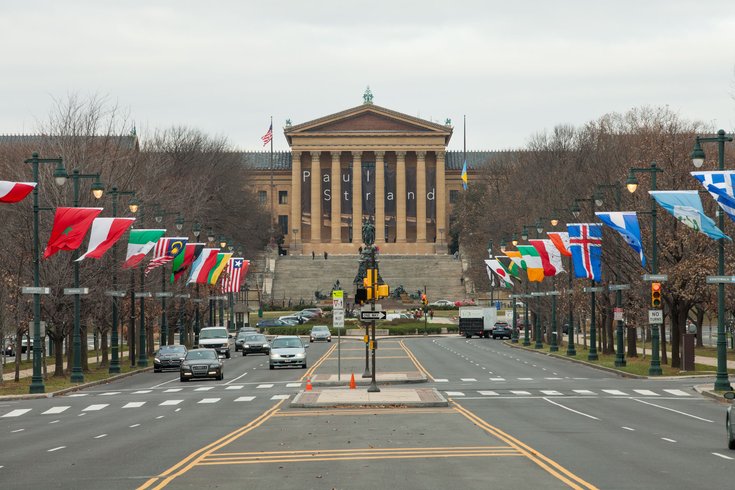
January 12, 2015
 Thom Carroll/for PhillyVoice
Thom Carroll/for PhillyVoice
The Philadelphia Museum of Art and the Benjamin Franklin Parkway.
As reported by the Associated Press, arts and culture funneled more than $698 billion into the U.S. economy in 2012 for about 4.32 percent of the country's goods and services. Carrying the bulk of the weight, the report says, are the film/video, broadcasting, publishing, retail sales, performing arts and advertising industries. A previous report released in 2013 cited the figure at $504 billion but did not account for architectural services, online ticket vendors and "entertainment originals" in book publishing, film and television.
But let's add some perspective, shall we?
Arts and culture have a $3.3 billion impact on the Greater Philadelphia economy, according to extensive in-person surveys conducted in 2011 by the Philadelphia Cultural Alliance and funded by the William Penn Foundation. That figure includes not just direct spending, such as money spent on tickets or to produce an event, but indirect spending as well -- so, other industries that are created or impacted by a night out to the theater (like the restaurant business).
"Certainly, that [$3.3 billion] was a much higher number than we anticipated when we did our surveys," John McInerney, vice president of marketing and communications for the Philadelphia Cultural Alliance, told PhillyVoice.com. "The local economy is around a trillion dollars, so it's, you know, it's 3 or 4 percent of spending in all of the region, so you have to take that into context."
Also necessary to put into context, he said, is the newly released report's definition of the arts.
"It's hard to get a sense [of how Philly's creative economy really compares]. ... It gets tricky when you start to include a lot of stuff that's farther and farther from the arts," he said.
One example might be advertising, with the debate, "Do we include all of advertising in our data, or just creative consultants?" There's no cut-and-dry answer.
"[The report] doesn't capture the informal creative economy, either," he said. "How about all of the independent music bands? But it's just four guys, you know? They have day jobs; it's difficult to measure accurately the real picture of the creative sector."
That said, the National Endowment for the Arts report (conducted in 2012) and the Survey of Public Participation in the Arts (conducted from 2002-2012) offered up some telling tidbits. The most interesting -- and relevant to what McInerney observes in his Philly work, he said -- are the high impact that location and transit access have on attendance numbers ("Arts development in Philly is basically following the El," he said), a higher interest in participation in the arts among women and the finding that patrons don't want to see a show by themselves, which is something that programming -- in Philly and elsewhere -- may adapt to in the coming years. That is also something McInerney said his organization would like to research more.
The NEA and Department of Commerce's Bureau of Economic Analysis also report that, nationwide, 4.7 million people are employed by the production of arts and cultural goods. Compare that to Philly, and the number is about 65,000 -- which, McInerney emphasized, is a number that's in line with some of the region's biggest employers.
The Survey of Public Participation in the Arts also suggests slightly more than half (54 percent) of Americans have attended a live performing arts event since 2002. McInerney said that, based on on-file mailing lists, about two out of three households in the Philadelphia region have purchased tickets for an arts performance at some point.
For more information on Philadelphia's creative economy, see the Philadelphia Cultural Alliance's 2014 portfolio report, a local study of the creative economy released earlier this year that has data compiled from 2009-12.